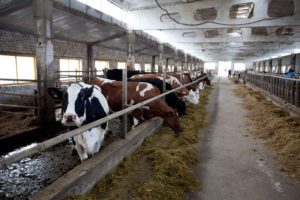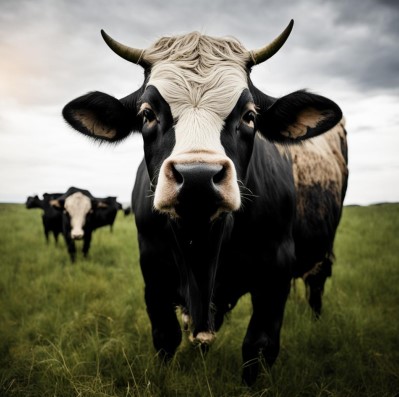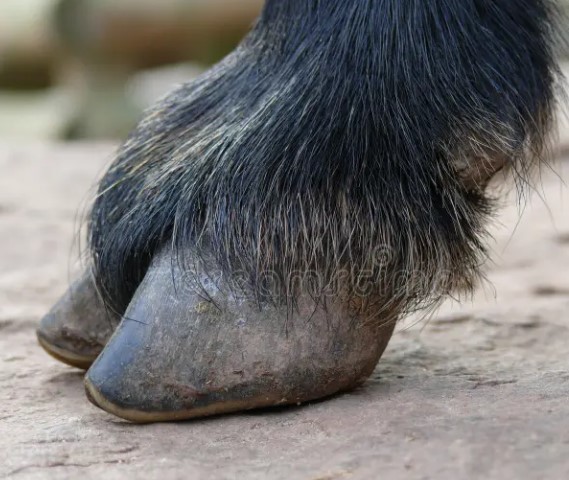More than 40 enterprises in the region have the status of breeding organizations in the Vologda region

Breeding work is carried out at a high level in the Vologda region . Today, 41 legal entities have 53 tribal organization statuses. Most of them specialize in breeding cattle for dairy production. Of the total number of breeding organizations, 35 enterprises have 38 statuses of breeding organizations (three enterprises have two statuses each).
In the region, breeding activities in the field of dairy farming are carried out by 22 breeding plants and 16 breeding reproducers. During the current year, 23 tribal organizations received or confirmed their existing status.
Two breeding organizations have been newly created on the basis of the Vologodsky branch of Alta Genetics RUSSIA LLC: an organization for artificial insemination of farm animals and an organization for embryo transplantation of cattle.
An information support center has been created on the basis of the regional information and selection center of JSC Breeding Enterprise Cherepovetskoye, and a molecular genetic examination laboratory has been reopened on the basis of the Vologda Scientific Center of the Russian Academy of Sciences. At the same time, three organizations ceased their activities in the field of livestock breeding.
“From 18 to 28 this year, the number of breeding farms for breeding the Holstein breed has increased, and accordingly, the number of cattle of this breed has increased significantly in the region. As of December 25, 2023, in the breeding organizations of the region, 83.1% of cows are classified as Holstein, 8.5% are black-and-white, 4.5% are Ayrshire, 3.2% are Yaroslavl, and 0 are Kholmogorsk. .7% of cows,” said Sergei Poromonov, HEAD of the region’s Department of Agriculture and Food Resources.
The Department monitors the implementation of minimum requirements by breeding enterprises in the region. These are requirements for the number of pedigree dairy cattle, the yield of calves, the frequency of monitoring MILK production per month with determination of the fat and protein content in milk , the use of artificial insemination of cows and heifers, and the sale of pedigree young stock. An important requirement for organizations remains the implementation of a breeding work plan developed jointly with the breeding center.
Read together with it:
- Reuters has learned of India's new demand for companies over Russian oil.The origin of oil supplies is usually reflected in companies' monthly reports, but now they are required to report supplies from RUSSIA on a weekly basis.REUTERS believes the new demands are linked to India's plans for a deal with the US. The Indian Oil Ministry's Petroleum Planning and Analysis Cell (PPAC) has begun requesting information from refineries on crude imports from Russia and the Unite...
- Развитие фермерства в Краснодарском крае: новые достижения и поддержка со стороны властейДля повышения конкурентоспособности местных фермеров предусмотрена помощь в создании кооперативов, а также предоставление государственной поддержки через гранты, субсидии и льготные кредиты. В регионе зарегистрировано более 150 сельскохозяйственных кооперативов, насчитывающих свыше 2 тысяч пайщиков, которые за последние три года удвоили объёмы продукции до около 2 миллиардов рублей. Фермеры управл...
- The results of meat livestock farming in the Moscow region have been summarized: production exceeded 320 thousand tons.According to the regional Ministry of Agriculture and Food, the region is home to over 170,000 HEAD of cattle , 58,100 sheep and goats, and 325,700 pigs. Poultry farms account for a significant share of the total production, with 11.3 million head of livestock. The bulk of livestock and poultry for slaughter is produced by large farms such as Troparevo CJSC and Elinar-Broiler Poultry Farm LLC. Nin...
- Казахстан расширяет экспортные возможности в сфере животноводстваЕвропейский Союз открыл рынок для пчеловодческой продукции. Экспорт говядины за первые десять месяцев 2025 года увеличился в 1,7 раза, достигнув 30,2 тыс. тонн, в то время как поставки баранины выросли на 1,9 раза — до 25,5 тыс. тонн. Такой рост объясняется высоким спросом на казахстанское мясо со стороны зарубежных партнеров. Работа по расширению ассортимента экспортируемой продукции продолжается...
- A renovated dairy complex with unique designs was commissioned in the Petrikovsky district.December 30, Gomel. A renovated dairy complex with unique design was commissioned in the Petrikov District, BelTA reports. New facilities have been commissioned at the existing dairy complex. Construction of two cowsheds, each capable of accommodating 384 HEAD of dairy cows, a milking parlor, and a HEALTH center for young animals up to three months of age, began in July of this year at the livesto...
- Plant growers in the Chelyabinsk region have increased productionThe results of the crop production sector in 2025 and the objectives for the coming year were discussed at an extended meeting of the Board and Public Council of the Ministry of Agriculture of the Chelyabinsk Region. Heads of rural municipal districts of the Chelyabinsk Region participated in the meeting via videoconference. Opening the meeting, Deputy Governor of the Chelyabinsk Region and Minist...






























































